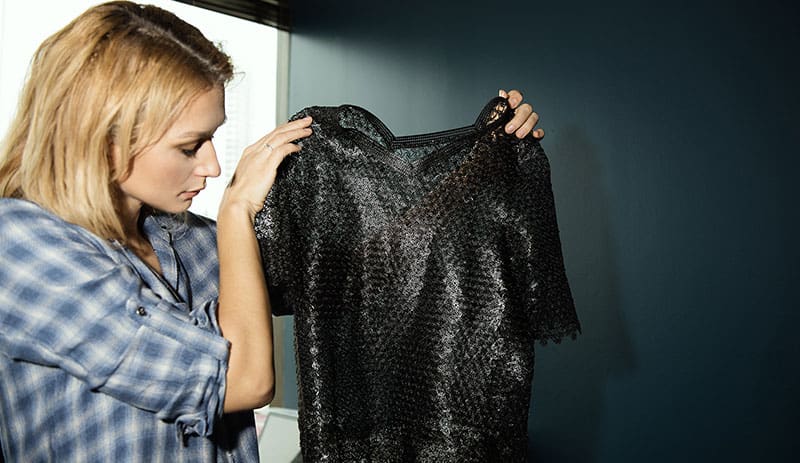Can 3D Printers Make Clothes

Table of Contents
The short answer is yes, 3D printers can make clothes! There are even several fashion designers who have made use of 3D printed clothes on their catwalks. However, these items of clothing aren't practical for everyday use. One 3D printed dress in 2014 designed by threeASFOUR meant that the model couldn't sit down because otherwise the clothing would have shattered.
Another designer, Danit Peleg, makes use of 3D printed clothes in her designs. This innovative fashion has made waves in the fashion industry. While 3D printed clothes may be an inevitability, there are a couple of factors that mean they won't be the mainstream just yet.
Cost and time are some of the many factors that affect this. For example, Peleg's customized 3D printed bomber jackets take a whopping 100 hours to print. The type of 3D printer needed to print your own clothes isn't affordable for the average consumer, either. These can cost in the region of thousands of dollars if not more.
But with 3D printing technology making fast progress, there's no doubt making your own clothes could be on the cards in the future. Can you imagine printing out an item of clothing that will fit your specific measurements? These clothes are also more recyclable, too. 3D printed items can be put into machines which turn them into powder, which can be used to create other 3D items.
So yes, 3D printers can make clothes. But there are several factors that mean this will be trickier to achieve for the average consumer. Chances are your 3D printer at home won't be capable of creating new clothes just yet. Another factor to consider is how comfortable 3D printed clothes are to wear.
Are 3D printed clothes comfortable?
There are many potential benefits to 3D printed clothing. However, the main factor you will need to consider is whether they will be comfortable to wear day-to-day. There's no point in getting excited about clothing that you won't want to wear regularly!
3D printed clothing is made using plastic, which means they aren't the most comfortable clothes to wear. These clothes don't wear the same as traditional fabrics. Whereas traditional fabrics will drape and stretch, 3D printed clothes are stiffer and much less comfortable to wear.
Some fashion designers like Danit Peleg make use of a fabric lining on their 3D printed clothes to make them more comfortable to wear. But you may be wondering whether using fabric on 3D printed clothes defeats their original purpose? Other fashion designers have tried to make use of a rubbery material instead of plastic to make them more comfortable to wear.
Despite the potential benefits of 3D printed clothing, the industry has some work to do before it will be suitable for the mainstream consumer. Even though it would be pretty cool to be wearing a 3D printed shirt, you're not likely to want to wear it that often if it makes you uncomfortable!
In theory, 3D printed clothes will be more comfortable in the long run because they can be created to fit your exact measurements. Once the technology has developed, you could be able to create the new clothes you need from the comfort of your own home.
What materials cannot be 3D printed?
You may be wondering that if comfort is an issue, why not just use cloth, fabric, or thread to 3D print clothes? The answer is that these types of materials will burn before they can be melted down and extracted through the 3D printer nozzle. This doesn't make them practical for use in printing clothes.
So plastic or similar materials have to be used in 3D printing clothes. If you want to wear a wardrobe of clothes made entirely from 3D printing, chances are you'll have a few years to wait before a truly comfortable material and design can be created.
However, this plastic material is also one of the great benefits to 3D printed clothes as opposed to traditional fabrics. That's because they are much easier to recycle after you're finished with them. Whereas traditional clothes end up in landfill, plastic 3D printed clothes can be broken down to be used for other 3D printed items.
How can 3D printing be used in the fashion industry?
3D printing has mostly been used so far in the fashion industry by designers on the catwalk. These have been used for art pieces or couture fashion, but aren't really practical for day-to-day life in terms of clothes.
However, 3D printing has been used to create shoes and other accessories. Some brands such as Adidas have even been using 3D printing with their shoes, so it's easy to see how 3D printing for clothes and other fashion accessories will be the mainstream in the next few years.
Other fashion designers are looking to develop 3D printed clothing that's sustainable and biodegradable. Because 3D printers are more frugal than other traditional methods, this means that only the needed amount of material gets used when creating their clothes.